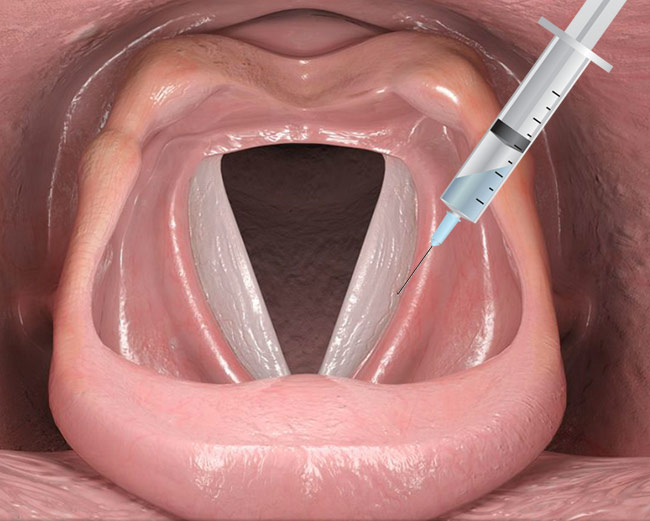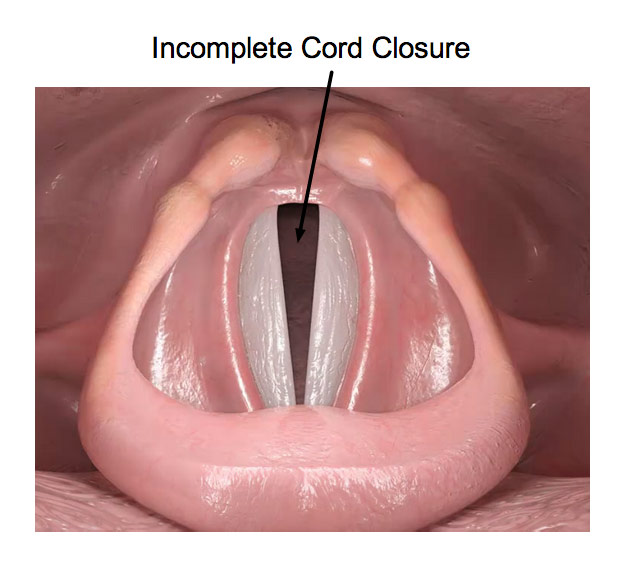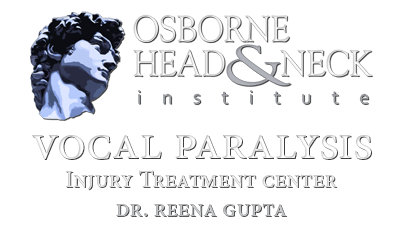CAUSES OF VOCAL INJURY FROM MEDICAL CONDITIONS

Many medical conditions may result in voice changes. This may be due to:
- Masses that press on the nerve (i.e. thyroid nodules)
- Hormonal imbalances (i.e. thyroid hormone imbalance)
- Neurological diseases (i.e. Parkinson’s disease, Multiple Sclerosis)
- Brain injury (i.e. stroke)
- Virus
Vocal paralysis from these conditions may cause:
- Difficulty swallowing
- Hoarse voice
- Breathy voice
- Decreased vocal range
The vocal cords move due to input from two nerves: the recurrent laryngeal nerve (major) and superior laryngeal nerve (minor). These nerves are very delicate and prone to injury. Many disease processes may result in weakness of one of these nerves, and produce symptoms.
Laryngoscopy for Diagnosis of Vocal Injury
LEFT VOCAL PARALYSIS
This video demonstrates a left vocal cord paralysis. The left vocal cord (on the right of the image) is not moving. This results in a large gap between the vocal cords, which results in a breathy and weak voice.
BILATERAL VOCAL PARALYSIS
Rarely, after neck surgery, both vocal nerves can be damaged. This results in inability to move both vocal cords. If the cords are stuck in the midline position, there may be significant difficulty breathing, as with the patient in this video.
Treatment Options
Depending on the details of your case, you may be a candidate for any one of several vocal treatment options.
VOICE THERAPY
Occasionally voice symptoms due to vocal injury from spine surgery are improved with voice therapy. Most patients should at least do a trial of therapy with a highly trained voice therapist (rather that a general speech therapist) before proceeding with any surgical options. Referral is provided by an expert laryngologist.
VOCAL CORD INJECTION

Vocal cord injection is performed when there is a vocal cord paralysis or partial paralysis (paresis). This procedure may be done under local or general anesthesia.It involves an injection into the side of the vocal cord, that fills the gap between the vocal cords by pushing the weak side closer to the strong side. There is minimal risk of a worsened voice.
THYROPLASTY
Thyroplasty is performed when there is a vocal cord paralysis or partial paralysis that results in a larger gap between the vocal cords or a gap in the back of the larynx (voice box). Large gaps and gaps in the back of the larynx respond better to thyroplasty than injection.

Thyroplasty involves implanting a material on the side of the vocal cord that pushes it closer to the strong side. This involves an incision in the neck that is closed by a plastic surgeon, to avoid cosmetic issues.



